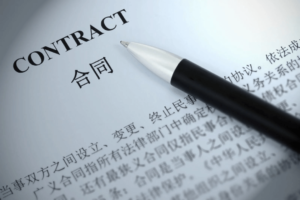China has recently introduced significant amendments to its design patent filing system, aligning it more closely with international standards. These changes bring a range of benefits for foreign inventors, providing them with more flexibility and efficiency in protecting their designs in China. The key aspects of these amendments include the use of dotted and solid lines in design representations, the introduction of domestic priority, public access to evaluation reports, streamlined procedures for international design applications, and an overview of the 2021 updates to the design patent law. The most recent amendments to the Implementing Regulations of the Patent Law were announced on December 21, 2023, and took effect on January 20, 2024.
Table of Contents
ToggleAdvantages of Filing Directly in China
For foreign inventors, filing design patents directly in China offers numerous advantages, making it an attractive option for securing design protection in one of the world’s largest markets.
Cost Efficiency
Filing directly in China is generally more cost-effective compared to filing through international routes. By eliminating intermediary steps and reducing administrative costs, inventors can save significant amounts on filing fees and related expenses.
Speed of Processing
China’s streamlined application process ensures faster turnaround times. The recent amendments have further expedited the examination and approval process, allowing foreign inventors to secure protection more quickly in China (3-4 months) than international filings (8-10 months).
Six-Month Priority Advantage
If a design patent has already been filed in another country, foreign inventors can benefit from a six-month priority period when filing in China. This means that the filing date of the original application can be used as the filing date in China, providing an extended timeframe to secure protection without losing priority.
Language and Local Expertise
All patent applications in China are processed in Chinese. Foreign inventors who can navigate the application process with local expertise benefit from higher quality and more precise patent applications. Engaging local patent agents or firms ensures that the nuances of the Chinese language and legal system are well-handled, avoiding potential misunderstandings and increasing the chances of successful applications.
Flexibility in Design Patent Filings
The introduction of a new filing method that allows the use of both dotted and solid lines to represent different aspects of a design aligns China with practices in countries like the United States and the European Union, bringing several advantages to foreign inventors.
Dotted and Solid Lines
- Dotted Lines: Used to denote disclaimed portions of a design, helping inventors clearly distinguish between claimed and unclaimed elements. For example, non-essential parts of a product that do not require protection can be outlined with dotted lines.
- Solid Lines: Used to define the claimed design elements, specifying the precise aspects of the design that are protected.
Benefits of Flexibility
- Enhanced Precision: Foreign inventors can more accurately describe their designs, leading to better protection and less ambiguity.
- Greater Control: Inventors have more control over what parts of their design are claimed, enabling them to protect the most valuable aspects.
- Improved International Compatibility: Aligning with international practices reduces the complexity for foreign inventors seeking protection in China.
Domestic Priority
The amendments introduce the concept of domestic priority for design patents, streamlining the application process for foreign inventors.
Simplified Process
Foreign inventors can claim priority based on an earlier filed invention or utility model application in China, integrating different patent types within China’s intellectual property system. This not only simplifies the process but also ensures comprehensive protection for design aspects of an invention.
Practical Implications
- Time Efficiency: By claiming priority from an earlier application, foreign inventors can reduce the time needed to secure protection for their designs.
- Resource Optimization: Inventors can leverage the research and documentation from earlier applications, reducing duplication of effort.
- Strategic Filing: Foreign inventors can strategically use priority dates to strengthen their patent portfolio and protect their innovations more effectively.
Public Access to Evaluation Reports
The amended regulations mandate that evaluation reports for design patent applications be made publicly accessible. This transparency offers several benefits to foreign inventors.
Transparency and Insight
By providing insights into the examination process, designers can better understand the criteria used by patent examiners. This knowledge can guide foreign inventors in refining their applications to meet the necessary criteria.
Enhanced Integrity
Public access to evaluation reports helps identify potential inconsistencies or discrepancies in the examination process, strengthening the integrity of China’s design patent system by holding it accountable to high standards of fairness and accuracy.
Advantages for Inventors
- Learning from Others: Foreign inventors can study evaluation reports to understand common pitfalls and best practices.
- Improving Applications: Access to these reports allows inventors to refine their applications, increasing the chances of approval.
- Community Feedback: Public reports foster a collaborative environment for innovation, encouraging community feedback and peer review.
2021 Updates to the Design Patent Law
In 2021, China made significant updates to its design patent law to further enhance protection and enforcement.
Extended Protection Period
The protection period for design patents was extended from 10 years to 15 years, aligning with international standards and providing longer-term security for foreign inventors.
Partial Design Protection
The introduction of partial design protection allows inventors to seek protection for specific parts or elements of a product, rather than the entire design, particularly useful for complex products with unique features.
Simplified Application Process
Simplified procedures reduce the number of required documents and streamline administrative processes, making the system more user-friendly for foreign inventors.
Recent Amendments: January 2024
The most recent amendments to the Implementing Regulations of the Patent Law, announced on December 21, 2023, and effective from January 20, 2024, further enhance the efficiency and effectiveness of the design patent system in China.
Key Changes
- Enhanced Clarity: Detailed guidelines on the use of dotted and solid lines ensure consistent application and reduce ambiguity.
- Strengthened Examination Procedures: More rigorous examination procedures aim to ensure high-quality patents and reduce the risk of invalid patents being granted.
Implications for Foreign Inventors
- Higher Standards: Rigorous examination procedures ensure that only truly innovative designs receive protection, maintaining high standards in the patent system.
- Clearer Guidelines: Detailed guidelines help foreign inventors understand the requirements and prepare better applications.
Conclusion
These comprehensive amendments to China’s patent laws, particularly those concerning design patents, demonstrate the country’s commitment to refining its intellectual property landscape and aligning with international best practices. By adopting more flexible filing options, streamlining the application process through domestic priority, enhancing transparency with public evaluation reports, and facilitating international design applications, China is positioning itself as a leader in the protection of design rights.
For foreign inventors, filing directly in China offers cost efficiency, speed, and the advantage of leveraging local expertise to navigate the application process effectively. The six-month priority period further ensures that innovations are protected without losing priority. These advancements foster innovation and creativity, enhancing competitiveness on the global stage while providing robust protection for foreign inventors.
FAQs
What recent changes have been made to China’s design patent filing system?
Recent amendments have introduced several changes to China’s design patent filing system, including the use of dotted and solid lines in design representations, the introduction of domestic priority, public access to evaluation reports, streamlined procedures for international design applications, and updates to the design patent law effective from January 20, 2024.
Why should foreign inventors consider filing design patents directly in China?
Filing directly in China is more cost-effective and faster compared to international routes. It also offers a six-month priority period for those who have filed a design patent in another country, providing extended protection without losing priority.
What are the cost benefits of filing directly in China?
Filing directly in China eliminates intermediary steps and reduces administrative costs, resulting in significant savings on filing fees and related expenses.
How does filing directly in China speed up the process?
China’s streamlined application process and recent regulatory amendments have expedited the examination and approval process, allowing inventors to secure protection more quickly.
What language requirements exist for patent applications in China?
All patent applications in China are processed in Chinese. Foreign inventors should seek local expertise to ensure high-quality and precise patent applications, as navigating the process without knowledge of Chinese can lead to lower-quality filings and misunderstandings.
What is the six-month priority advantage?
If a design patent has already been filed in another country, foreign inventors can benefit from a six-month priority period when filing in China. This means the original filing date can be used as the filing date in China, providing an extended timeframe to secure protection.
What are dotted and solid lines in design patent filings?
- Dotted Lines: Used to denote disclaimed portions of a design, helping inventors clearly distinguish between claimed and unclaimed elements.
- Solid Lines: Used to define the claimed design elements, specifying the precise aspects of the design that are protected.
How do dotted and solid lines benefit foreign inventors?
These lines allow for enhanced precision in describing designs, greater control over what parts are claimed, and improved compatibility with international practices.
What is domestic priority in design patents?
Domestic priority allows applicants to claim priority based on an earlier filed invention or utility model application in China, streamlining the application process and integrating different patent types.
How does domestic priority simplify the patent application process for foreign inventors?
Foreign inventors can leverage earlier filing dates, reducing the time needed to secure protection, optimizing resources, and strategically strengthening their patent portfolios.
What are evaluation reports in the context of design patent applications?
Evaluation reports provide detailed insights into the examination process and criteria used by patent examiners for design patent applications.
Why has public access to evaluation reports been mandated?
Public access fosters transparency, allowing inventors to understand the decision-making process, learn from other applications, and refine their own submissions, promoting consistency and fairness in the examination process.
How can foreign inventors benefit from public access to evaluation reports?
- Learning from Others: Study reports to understand common pitfalls and best practices.
- Improving Applications: Refine applications based on insights from evaluation reports.
- Community Feedback: Engage in a collaborative environment for innovation through community feedback and peer review.
What were the key updates to the design patent law in 2021?
- Extended Protection Period: The protection period was extended from 10 years to 15 years.
- Partial Design Protection: Inventors can seek protection for specific parts or elements of a product.
- Simplified Application Process: Procedures were streamlined to reduce the number of required documents and administrative steps.
How do these updates benefit foreign inventors?
These updates provide longer-term security, targeted protection for innovative aspects, and a more efficient filing process.
What changes were introduced in the recent amendments effective January 20, 2024?
- Enhanced Clarity: Detailed guidelines on the use of dotted and solid lines.
- Strengthened Examination Procedures: More rigorous procedures to ensure high-quality patents.
How do these changes impact foreign inventors?
- Higher Standards: Ensures that only truly innovative designs receive protection.
- Clearer Guidelines: Helps foreign inventors understand requirements and prepare better applications.
What is the overall impact of these amendments on foreign inventors?
The amendments to China’s design patent filing system enhance cost efficiency, speed, and local expertise. They also provide a six-month priority advantage and ensure robust protection. These changes foster innovation, enhance transparency, and strengthen the overall intellectual property environment, making China an attractive destination for foreign inventors seeking comprehensive design protection.








